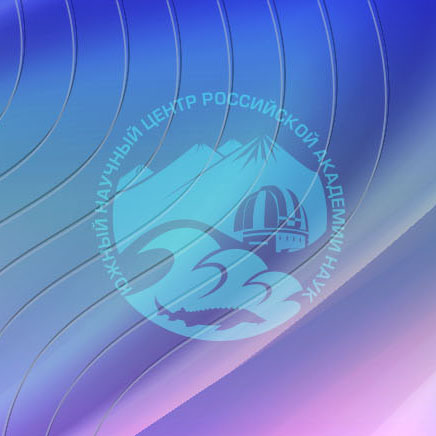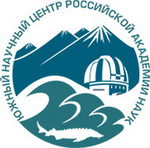"Scientific Instrument Engineering - Prospects for the Development of Scientific Instruments"
All-Russian Scientific and Practical Conference with international participation
17-20 September 2024 the Federal Research Centre Southern Scientific Centre of the Russian Academy of Sciences with the support of the Interregional Scientific and Educational Centre of the world level of the South of Russia, Autonomous Non-Profit Organization ‘Centre for Development of Scientific and Educational Initiatives’ (project ‘Nasha Laba’), the Southern Federal University, as well as the Scientific and Technological Centre of Unique Instrumentation of the Russian Academy of Sciences (STC UI RAS) hold the All-Russian Scientific and Practical Conference with international participation ‘Scientific Instrument Engineering - Prospects for the Development of Scientific Instruments’.

The aim of the conference: discussion and publication of achievements in the field of scientific instrument engineering, establishment and strengthening of professional ties between scientists, specialists of enterprises and organisations, as well as young researchers, increasing the efficiency of the use of scientific and technical potential in solving priority scientific and practical problems of instrument engineering development.
Within the conference there will be held an exhibition of instruments and equipment, as well as discussed the preliminary results of the Instrumentation Upgrade Programme 2020-2024 implemented within the framework of the National Project ‘Science and Universities’.
According to the results of the conference the best reports will be selected for publication in scientific journals ‘Physical bases of instrumentation’ (VAK, RSCI) and ‘Science in South Russia’ (VAK, RSCI).
The main directions of the Conference (Sections):
- Equipment and research methods in the field of biology
- Equipment and methods of research in the field of earth sciences
- Instruments for physical and chemical research
- New Materials, Structural Systems for Development of Devices and Sensors
- Microelectronics
- Information Technologies and Artificial Intelligence in Instrumentation Engineering
- Physical and mathematical methods in instrumentation engineering.
- Socio-economic, political and historical aspects of the development of scientific instrumentation
To participate in the conference it is necessary to submit an online application form at the following link: https://www.ssc-ras.ru/conferences/quotnauchnoe_priborostroenie__perspektivy_razrabotki_sozdanija_r/, and an article by e-mail: conf.2024.ssc.ras@ya.ru (Gubaeva Iman Sharanievna) by 1 August 2024.
The Organising Committee retains the right to select reports and communications. Presenters are provided with a multimedia projector. Please prepare presentation materials in PowerPoint format.
Enquiries by tel.: - 8-961-320-24-84 Gubaeva Iman Sharanievna; 8-928-226-27-49 - Doctor of Technical Sciences Yurasov Yuri Igorevich.
Full-time, absentee and online participation is provided. Payment of travelling expenses is at the expense of the sending party.
The working language of the conference is Russian. Speaking time limit: at the plenary session - up to 15 minutes; at the sectional sessions - up to 10 minutes.
The rules of article formatting
File name: direction number_First author's name.doc.
For example: 1_Petrov.doc.
Language of materials - Russian or English.
Volume - no more than 2 A4 pages.
Page and text parameters - Times New Roman font; interval 1,15 pt; font size 11; margins: top and bottom - 2,0 cm, left - 3,0 cm, right - 1,5 cm.
Figures - colour with a resolution of 300 dpi, with the extension tif or jpeg. All figures should be placed in the text of the article (they should be numbered and signed), as well as sent additionally as separate files.
Name of the figure file.
For example: 1_Petrov_Figure 1.
Graphs, schemes and diagrams should be drawn up in the form of a figure.
Subdrawing captions should be placed directly under the image (without a dot at the end of the caption).
For example: Figure 1. Appearance of the developed device: a) container, probe; b) view of the XCTD detachable bathythermosalinograph without container; c) scheme of the detachable probe.
References to figures in the text are obligatory.
For example: (Fig. 1)
Formulas are typed using a combination of the main font and Symbol font (exception for fractions, sums, square root) in Microsoft Equation 3.0 (Formula Editor in Microsoft Word) or Math Type 6. Latin characters in formulas and notations (both in text and figures) are typed in italics. Greek characters in formulas are in straight type.
Formulas should be numbered after the formula in parentheses.
For example: (1).
Only those formulas and equations should be numbered that are referred to in the subsequent statement.
Tables should be placed in the text of the article, they should have a numbered title and clearly labelled columns, convenient and understandable for reading. Table data should correspond to the figures in the text, but should not duplicate the information presented in it.
Table captions should be placed above them (without a dot at the end of the caption).
For example: Table 1. Total fertility rate by regions of Russia
References to tables in the text are obligatory.
For example: (Table 1)
The bibliographic list is placed after the main text of the article and is arranged in compliance with GOST R 7.0.5-2008. Bibliographic description of the borrowed sources, as well as the cited literature are given in a general list at the end of the article in alphabetical order (first in Cyrillic, then in Latin).
In-text references to articles should be presented in square brackets. For example: [1], when listing [3,4] or [5-7] .
The reference list should contain the works mentioned in the text according to the serial number of the source indicated in the text. References in the text of the article should be presented to all sources mentioned in the List of References, to research sources (scientific articles, monographs, etc.), including foreign ones.
MANDATORY ELEMENTS OF THE ARTICLE
1. Information about the authors:
- Title of the article, below - full name of the author(s) (indicate first initials, then surname, authors from different organisations should be marked with an upper numerical index):
- Place of work or study (university/organisation, city);
- current e-mail address.
For example:
Monitoring of coastal processes of the Azov-Black Sea coast of the Russian Federation using GIS-technologies
V.I. Ivanov1, S.K. Lubneva2
1 Southern Scientific Centre of the Russian Academy of Sciences, Rostov-on-Don, Russia
2 North Caucasian Federal University, Stavropol, Russia.
ivanov@yandex.ru
2 Bibliographic list.
For example:
List of references
1. Algorithms for searching similar objects in recommender systems. URL: https://habr.com/ru/articles/580162/ (date of reference: 15.07.2023).
2. Matishov G.G., Afanasenko V.I., Krinko E.F. Mius-front in the Great Patriotic War. 1941/1942 gg. 1943 / 2nd edition, revised and supplemented. Rostov n/D.: Izd-vo SSC RAS, 2011. 228 с.
3. Science-intensive technologies for the innovation industry of the southern macro-region: a collection of scientific articles. Rostov n/D.: Izd-vo SSC RAS, 2011. 248 с.
3. At the end of the article.
After the list of literature, give the full name of the author (-s) and the title of the article in Russian and English (initials are indicated without a space, after the surname).
For example: Ivanov V.I., Lubneva S.K. Monitoring of coastal processes of the Azov-Black Sea coast of the Russian Federation using GIS-technologies.
Example of a conference application form
| 1. | Full name | |
| 2. | Date, month, year of birth | |
| 3. | Academic degree | |
| 4. | Academic title | |
| 5. | Place of occupation (organisation, city) | |
| 6. | Position | |
| 7. | Report’s title | |
| 8. | ||
| 9. | Contact phone number | |
| 10. | Preferred form of participation (face-to-face, online, correspondence) | |
| 11. | Date of arrival Date of departure | |
| 12. | Requirement for presentation equipment |


